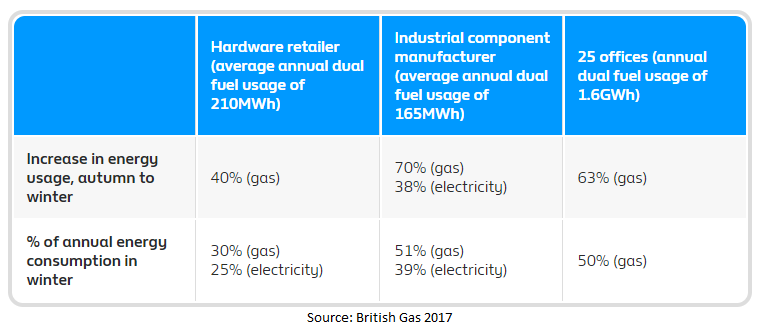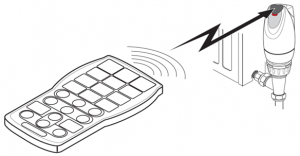Do we get a shock every winter when we get the first of our winter heating bills?
Perhaps we are too complacent? It’s winter, so we sit back and accept that we will pay through the nose for our heating?
Or, we turn down the heating everywhere? The dark nights are depressing enough without adding to the misery of our staff by uncomfortable working conditions.
So, let’s be positive! Why not let the forthcoming winter motivate you to reduce your heating costs. What’s wrong with slashing your heating bills by over 30%?
This blog will focus on one of our core areas of expertise, i.e. heating control. It is arguably the easiest and quickest way to make the greatest impact on your energy consumption. Even better, our customers also have their say, as you can see below.
1.0 Some Get It
Clothing stores are already stocking for the winter, to catch the early revenues from consumers preparing for the onslaught of bad weather.
So, now’s the time for all of us to prepare for the business of winter! We all dread our winter bills. For those brave enough, you’ve even compared them to the summer months. Yes, even British Gas talk about bill increases of up to 70% !!!
Some organisations will proactively plan for winter. The majority of organisations will do their best with their current heating systems. Cash-strapped organisations (often SMEs) will wait till something fails, then make expensive knee-jerk investments.
Whichever camp you are in, the £ pain will affect us all to a greater or lesser extent – depending on our decisions.
2.0 Focusing on Cost Reductions
Many have learned from the past and listened to what others have done to quickly and dramatically reduce energy costs.
Here’s some good general tips, for anyone who wants a refresher.
This piece from BC Hydro reinforces a key point that a small reduction in thermostat settings can show a big reduction in costs and energy usage.
Similar organisations in similar buildings (if not the same) using similar heating systems, have vastly different heating bills. What’s different? Of course there can be many reasons, far too many to mention here. However, these typically boil down to:
- efficiencies
- consistency in heating control
- protection from the cold
- staff engagement
For the latter (staff engagement), clearly this is not our area of expertise. However, there are many examples where staff have ‘bought in’ to the organisation’s need to be energy efficient.
The obvious results have been cost savings. Actually, here’s a super light-hearted video clip from NatWest highlighting this very point (albeit promoting a different product).
3.0 Causes of High Heating Costs
Here are some of the issues that can be quickly fixed to slash your heating costs.
3.1 Heating empty rooms
Come on! How crazy is that.
3.2 Staff have the right to be comfortable
You have an obligation to ensure they are. However, staff:
- don’t have the right (nor the knowledge) to interfere with systems,
- should not need to use extra electric heaters (these are wildly expensive!),
- should not be opening windows to offset overheating,
- are individuals, so they will feel comfortable at differing temperatures.
3.3 Erratic variations in temperature
They are causing you to set heating too high.
3.4 Seized TRVs
This are common-place and stop effective heating control.
All these contribute to unnecessarily high heating costs and yet, are so easily fixed.
There are also people considerations:
- Some organisations have different heating needs, e.g. care homes have higher settings than offices.
- The same temperature setting for sedentary workers and manual workers means one group is going to be uncomfortable and less productive.
- Sitting close to a radiator means you feel warmer due to its radiated heat. Take this into consideration when organising your office layout.
Know your users’ needs and this will help you optimise your energy consumption and employee comfort/productivity (See our earlier heating blog).
4.0 Some Solutions to These Issues
The trusty TRV in recent years has been bandied around as the solution to local heating control and cost/energy savings. To a certain extent these ‘1-5 Dial’ basic TRVs have been successful in reducing costs. The later programmable TRVs (Programmable Radiator Controls – PRCs) have also further helped reduce costs – to some extent.
While they have had some impact on some of the issues highlighted earlier, they have in no way effectively resolved them.
Newer TRV technologies that can further reduce costs and increase effectiveness of heating, have made them redundant…….
Heat Compensating TRV
In our earlier blog comparing TRVs, we explained how effective heat compensating TRVs can resolve the issues of erratic temperatures, human interference and wasted heat. In summary – they dramatically reduce costs and energy usage.
Many organisations have benefitted from these TRVs, i.e. eTRV+ from Chalmor. So, we’re not going to repeat ourselves, but let our customers explain.
Below are just three case studies on the use of eTRV+ with a quote from each and a link:
- Bristol University, “Chalmor’s eTRV gave us a 30% energy saving in our student accommodation within the first year of installation, providing an astonishing 1 year return on investment.”
- RBS, Leeds reads, “eTRV+ proved its merit in the ability to independently schedule and control heating in different floors.”
- South England care home case study reads, “Straight away we noticed an improvement in comfort, setting each room separately gives us far greater control to cater to individual needs…..we know we are making a good energy saving too.”
Summary
There’s a lot to do in preparation for winter. Our experience and most importantly that of our customers state that cutting your heating bills is not onerous. As well as being beneficial to your bottom line, your staff and business productivity also win.
We can help.
Contact us at: https://www.chalmor.co.uk/contact/
Email: info@chalmor.co.uk



